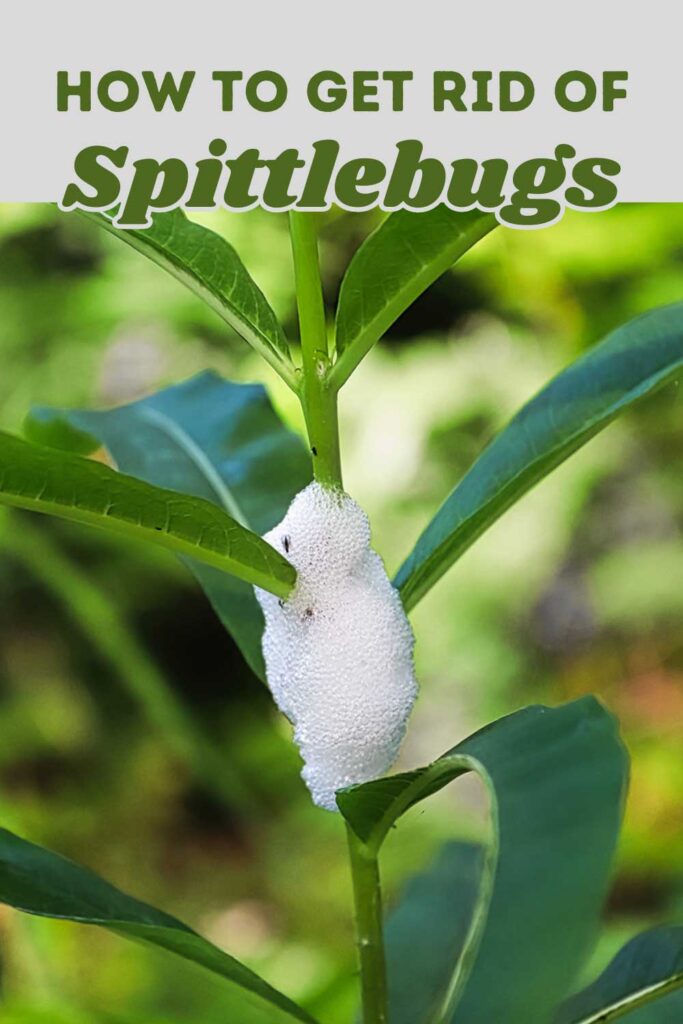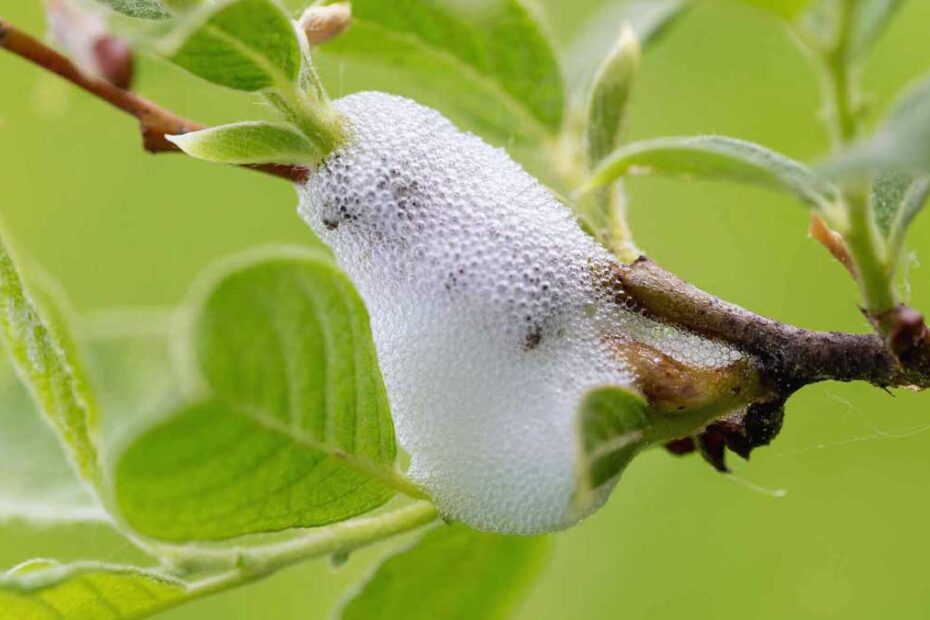If you’ve noticed frothy white masses on your plants, you’re likely dealing with spittlebugs. These tiny pests can cause significant damage to your garden by sucking the sap from plants and leaving behind unsightly spittle. While they might seem harmless at first glance, an infestation can weaken your plants and stunt their growth.
Don’t let these pesky insects ruin your hard work. Understanding how to identify and effectively eliminate spittlebugs is crucial for maintaining a healthy garden. In this guide, you’ll learn practical, eco-friendly methods to get rid of spittlebugs and keep your plants thriving.
Key Takeaways
- Identify Spittlebugs: Look for distinctive frothy white masses on plant stems and leaves, which are protective nests for nymphs.
- Understand Damage: Spittlebug infestations lead to stunted growth, yellowing leaves, and deformed fruits, adversely impacting plant health.
- Prevention Strategies: Regular pruning, proper watering, mulching, companion planting, and maintaining healthy soil help prevent infestations.
- Natural Solutions: Use natural predators like ladybugs and spiders, and apply homemade remedies such as soap or garlic sprays to manage spittlebug populations.
- Organic and Chemical Treatments: Employ organic products like insecticidal soap and diatomaceous earth, or chemical treatments like imidacloprid and bifenthrin for severe cases.
- Clean Equipment: Regularly sanitize gardening tools and disinfect pots to minimize the risk of reintroducing spittlebugs.

Understanding Spittlebugs
Spittlebugs are small insects known for their distinctive frothy white masses found primarily on plant stems and leaves. These pests can cause significant damage, especially in gardens and agricultural settings, by sucking sap from plants and stunting their growth.
Key Characteristics
- Appearance: Adult spittlebugs are typically about 0.1 to 0.2 inches long, with a brown or greenish color. Nymphs are pale and surrounded by spittle masses.
- Behavior: Nymphs produce a frothy substance that protects them from predators and desiccation.
- Habitat: You can find spittlebugs in both gardens and wild vegetation, particularly in moist environments.
Lifecycle
- Eggs: Spittlebugs lay eggs on plant stems and leaves in late summer.
- Nymphs: After hatching in spring, nymphs feed on plant sap and produce spittle masses.
- Adults: Mature spittlebugs emerge from late spring to early summer and continue feeding on plants.
Identifying Spittlebug Damage
Spittlebug infestations can lead to:
- Stunted Growth: Due to sap extraction, plants may show diminished growth.
- Yellowing Leaves: Prolonged feeding can cause leaves to yellow and wilt.
- Deformed Fruits: In fruit-bearing plants, spittlebugs can lead to misshapen produce.
Why Control is Important
Managing spittlebug populations is crucial to maintaining plant health. Left unchecked, these pests can reduce crop yields and compromise the aesthetic quality of ornamental plants.
- Gardener Concerns: Home gardeners should monitor plants regularly and take early action.
- Agricultural Impact: Farmers need to be vigilant to protect crops from potential yield losses.
Understanding these facets of spittlebugs helps you identify and target them more effectively. In the next section, the article will cover practical steps for eliminating spittlebugs using eco-friendly methods.
Signs of Spittlebug Infestation
To successfully manage spittlebugs, it’s essential to recognize the signs of an infestation. Knowing what to look for can help you detect and address the issue before it escalates.
Identifying Spittlebug Nests
Spittlebugs create distinctive frothy nests that protect their nymphs. These nests appear on stems and leaves of plants, forming a foam-like substance. Key features of spittlebug nests include:
- Appearance: White, frothy masses
- Location: Typically found on plant stems, leaves, and sometimes roots
- Function: Protects nymphs from predators and dehydration
Plant Symptoms
Infested plants exhibit several symptoms, which indicate spittlebug activity. Observing these changes in your plants can pinpoint a spittlebug problem:
- Stunted Growth: Reduced plant size due to nutrient loss
- Yellowing Leaves: Chlorosis caused by sap-sucking behavior
- Deformed Fruits: Irregular fruit development and diminished quality
- Wilting: General plant weakness and wilting due to excessive sap loss
If you notice these signs, you likely have a spittlebug infestation that needs immediate attention.
Methods to Get Rid of Spittlebugs
Combating spittlebug infestations requires a combination of natural, homemade, organic, and chemical methods. You can carry out various strategies, each with distinct advantages, to protect your plants from these pests.
Natural Predators
Introducing natural predators can effectively control spittlebug populations without harming the environment.
- Ladybugs: These insects prey on spittlebug nymphs and adults.
- Spiders: Several spider species consume spittlebugs, reducing their numbers.
- Parasitoid Wasps: These wasps lay eggs inside spittlebugs, eventually killing them.
Encourage these beneficial insects by planting a variety of flowers and avoiding broad-spectrum pesticides.
Homemade Remedies
You can use simple, homemade solutions to repel or eliminate spittlebugs.
- Soap Spray: Mix 1 tablespoon of dish soap with 1 quart of water. Spray this mixture on affected plants to break down the spittlebug’s protective froth.
- Garlic Spray: Blend 2 cloves of garlic with 1 quart of water. Strain and spray on infested areas to deter spittlebugs.
- Neem Oil: Dilute neem oil according to the product’s instructions and apply it to plants to disrupt spittlebugs’ life cycle.
These remedies are eco-friendly and safe for most plants.
Organic Commercial Solutions
Organic commercial products offer effective spittlebug control while maintaining environmental integrity.
- Insecticidal Soap: This product works like homemade soap spray but is often more concentrated and effective.
- Pyrethrin-Based Sprays: Derived from chrysanthemum flowers, these sprays target spittlebugs without persistent residues.
- Diatomaceous Earth: This abrasive powder damages spittlebugs’ exoskeletons, leading to dehydration and death.
These solutions are widely available and easy to apply.
Chemical Treatments
Chemical treatments provide rapid and effective spittlebug control, suitable for severe infestations.
- Imidacloprid: This systemic insecticide disrupts spittlebugs’ nervous systems upon ingestion.
- Bifenthrin: A broad-spectrum insecticide that can be applied as a foliar spray to target spittlebugs directly.
- Permethrin: Another potent insecticide that offers quick knockdown of spittlebug populations.
Use chemical treatments as a last resort, considering their impact on beneficial insects and the environment.
By utilizing these methods, you can effectively manage and eliminate spittlebug infestations, ensuring your plants remain healthy and vigorous.
Preventing Future Infestations
Preventing future spittlebug infestations in your garden requires a proactive approach. Consistent plant maintenance and diligent cleaning of your gardening equipment play crucial roles in this. Here’s what you need to do:
Plant Maintenance Tips
Follow these tips to keep your plants healthy and less susceptible to spittlebugs:
- Regular Pruning: Trim dead or diseased leaves and stems to prevent pests from finding hiding spots.
- Proper Watering: Ensure adequate hydration but avoid overwatering, which can create humid conditions favorable for pests.
- Mulching: Apply mulch around plant bases to retain moisture and deter pests.
- Example: Use organic mulches like straw, wood chips, or leaf mold.
- Companion Planting: Plant herbs like basil and garlic among vulnerable plants, as their strong scents repel spittlebugs.
- Healthy Soil: Use compost or organic fertilizers to maintain nutrient-rich soil, promoting robust plant growth and natural pest resistance.
Equipment Cleaning Guidelines
Cleaning gardening tools and equipment minimizes the risk of reintroducing spittlebugs:
- Sanitize Tools: After each use, clean pruning shears, trowels, and other tools with soapy water or a 10% bleach solution.
- Disinfect Pots and Trays: Wash pots, trays, and other containers thoroughly before reusing them to remove any lingering pests or eggs.
- Regular Maintenance: Inspect and clean hoses, watering cans, and spraying equipment to ensure they’re free of contaminants.
- Example: Use a brush to remove soil and debris and rinse with water.
- Storage: Store tools in a dry, clean area to prevent rust and pest habitation.
By maintaining plant health and ensuring clean equipment, you can significantly reduce the likelihood of future spittlebug infestations.
Conclusion
Effectively managing spittlebugs is crucial for maintaining a healthy and vibrant garden. By identifying these pests early and using eco-friendly methods like introducing natural predators and applying homemade remedies, you can safeguard your plants without harming the environment. For more severe cases, consider organic commercial solutions or, as a last resort, chemical treatments.
Preventing future infestations is equally important. Regular plant maintenance, proper watering, and keeping your tools clean can significantly reduce the risk of spittlebug problems. With these strategies in place, you’ll ensure your garden thrives season after season.
Frequently Asked Questions
What are spittlebugs?
Spittlebugs are small pests, generally 0.1 to 0.2 inches in size, that create frothy white masses on plants. They suck sap from plants, which weakens and stunts plant growth, leading to issues like stunted growth and yellowing leaves.
How can I identify a spittlebug infestation?
Signs of spittlebug infestation include the presence of frothy white masses on plant stems and leaves. Infested plants may also exhibit symptoms such as stunted growth, yellowing leaves, deformed fruits, and wilting.
What is the lifecycle of a spittlebug?
Spittlebugs lay eggs in late summer, which hatch into nymphs in spring. These nymphs mature into adults by early summer. Understanding this lifecycle is crucial for timely intervention and control.
How can I control spittlebugs naturally?
Introduce natural predators like ladybugs, spiders, and parasitoid wasps. Homemade remedies such as soap spray, garlic spray, and neem oil are also effective. These eco-friendly methods can help manage spittlebug infestations without harming the environment.
Are there organic commercial solutions for spittlebug control?
Yes, organic commercial solutions include insecticidal soap, pyrethrin-based sprays, and diatomaceous earth. These products offer effective spittlebug control while being gentle on the environment.
When should chemical treatments be used for spittlebug infestations?
Chemical treatments like imidacloprid, bifenthrin, and permethrin should be used as a last resort, particularly for severe infestations. These chemicals can impact beneficial insects and the environment, so consider all other control methods first.
How can I prevent future spittlebug infestations?
Maintain plant health through regular pruning, proper watering, mulching, and companion planting with herbs like basil and garlic. Use compost or organic fertilizers to keep soil healthy. Cleaning gardening tools and equipment also helps prevent reintroducing spittlebugs.
What are the symptoms of spittlebug damage on plants?
Spittlebug damage manifests as stunted growth, yellowing leaves, deformed fruits, and wilting. Detecting these symptoms early can prompt timely intervention and minimize the damage.
